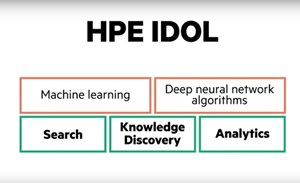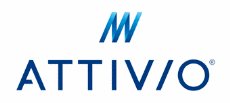Leader Cognitive Search Vendors: Coveo, HPE, Sinequa & Attivio
Search is no longer just a way of retrieving information people seek, so much so that even  the leading analyst firms have changed what they call enterprise search. For instance, Gartner now uses the term “Insight Engines” or “Proactive Search” while Forrester calls it “Cognitive Search.” The scope of enterprise search has changed, and this alteration alone tells us that organizations can retrieve much more information through search interactions. In the recent Wave report entitled Cognitive Search and Knowledge Discovery Solutions, Q2 2017, Forrester splendidly portrayed how keyword-based enterprise search of the past has evolved into cognitive search and what the next step is. In the report, the market research firm also evaluated 9 vendors on 23 criteria, grouped by Current Offering, Strategy and Market Presence. Below are how those platforms stack up in the report:
the leading analyst firms have changed what they call enterprise search. For instance, Gartner now uses the term “Insight Engines” or “Proactive Search” while Forrester calls it “Cognitive Search.” The scope of enterprise search has changed, and this alteration alone tells us that organizations can retrieve much more information through search interactions. In the recent Wave report entitled Cognitive Search and Knowledge Discovery Solutions, Q2 2017, Forrester splendidly portrayed how keyword-based enterprise search of the past has evolved into cognitive search and what the next step is. In the report, the market research firm also evaluated 9 vendors on 23 criteria, grouped by Current Offering, Strategy and Market Presence. Below are how those platforms stack up in the report:
-
Leaders: Coveo, HPE, Sinequa, and Attivio
-
Strong Performers: IBM and Mindbreeze
-
Contenders: Lucidworks, Squirro, and Elastic.co
According to Forrester, cognitive search and knowledge discovery is “the new generation of enterprise search solutions that employ AI technologies such as natural language processing and machine learning to ingest, understand, organize, and query digital content from multiple data sources.” Based on this description, here are the essential capabilities that cognitive search solutions must have:
Ingesting Any Data
According to the Economist, while content is doubling every 90 days, 80 percent of content used by knowledge workers for core revenue generation activities is unstructured. This explosive growth of unstructured content is becoming a big challenge for many organizations, especially for enterprises. On top of unstructured content, with the rising magnitude of omnichannel, not only are companies dealing with the mass amount of data at their disposal; but also connecting with and analyzing unstructured content, e.g. email, chat, and document repositories. Therefore, Forrester suggests that cognitive search solutions should be able to ingest and process even nontraditional enterprise data like images, video, audio, and machine data such as from internet-of-things (IoT) devices.
Scalability
Today, enterprise users expect instant searching of public Internet and Intranet data, extending from both static content like HTML, XML/XSL, and PDF, to dynamic content like SharePoint, PHP or ASP.NET. Users also expect instant, simultaneous search access to email messages along with multilayered embedded attachments. With this in mind, they also utilize so many business applications throughout their business process. Therefore, cognitive search solutions should be able to seamlessly interact with each component located in the digital ecosystem as each data has a unique contribution to improving the relevancy of search results.
AI Technologies Employment
The transformation from traditional keyword-based enterprise search engines to semantic search has started off with injecting Natural Language Processing (NLP) into the enterprise search platforms. From there, other AI technologies such as machine learning and natural human interactions have waded into the foray in time. Today, thanks to the advent of new technologies, cognitive search platforms are capable of predicting the intent behind the search request and increasing the relevancy.
Search Applications
The new wave of AI-assisted services like Apple Siri, Microsoft Cortana, Facebook’s M, Alexa-powered Amazon Echo, and Google Home have already started changing how we browse the web. Just like many other technology trends, the consumer market, initially, was the target for conversational systems but today, it becomes an emergent software category that has clear business use cases and is embedded in a new set of cloud platform services. This revolutionary change in how people interact with computers has started expanding its footprints into the enterprise world. The backbone of these systems is search. Therefore, according to Forrester, vendors that can provide SDKs, APIs, and visual design tools will remain in the cut-throat competition.
Coveo, HPE, Sinequa, and Attivio Lead the Pack
In light of these must-have capabilities, Forrester named Coveo, HPE, Sinequa, and Attivio as Leaders in its report.
Coveo
Forrester’s analysts recognized Coveo for its research and development in “using advanced  analytics and machine learning to automatically learn the behaviors of individual users and return the results most relevant to them.” The report also drew attention to Coveo’s integrations with other technology companies such as Sitecore and Salesforce. On that note, as reported on the news, Coveo announced the release of Coveo Pro Edition for Salesforce. This addition completes the family of Coveo products for Salesforce, which includes the Free and Express Editions released a month prior to this announcement, as well as the Enterprise Edition. With the release of the Coveo Pro Edition, every Salesforce-based support team can quickly and easily add cloud-based content sources to their Community Cloud and Service Cloud organizations, allowing Coveo’s AI-powered search to surface personalized, relevant content and insights to agents, partners, and community members.
analytics and machine learning to automatically learn the behaviors of individual users and return the results most relevant to them.” The report also drew attention to Coveo’s integrations with other technology companies such as Sitecore and Salesforce. On that note, as reported on the news, Coveo announced the release of Coveo Pro Edition for Salesforce. This addition completes the family of Coveo products for Salesforce, which includes the Free and Express Editions released a month prior to this announcement, as well as the Enterprise Edition. With the release of the Coveo Pro Edition, every Salesforce-based support team can quickly and easily add cloud-based content sources to their Community Cloud and Service Cloud organizations, allowing Coveo’s AI-powered search to surface personalized, relevant content and insights to agents, partners, and community members.
Additionally, Sitecore customers can push all their content into the Coveo cloud where it can be used to create better search experiences, provide predictive recommendations and leverage xDB personalization. Coveo also integrates with Sitecore Commerce to provide relevant offers and product recommendations, to leverage profile information and visit behavior and profiles based on like visitors.
HPE IDOL
 Last year, HPE added natural language processing capabilities to its platform in an effort to improve human interactions with computers. The vendor saw a need for having questions answered in a way that feels like natural human interactions. Therefore, it rolled out HPE Natural Language Question Answering which is “designed to meet the demanding needs of data-driven enterprises”. According to the company, this new, language-independent capability can enhance applications with machine learning powered natural language exchange. When it comes to the Forrester report, though, the platform’s capabilities that allow developers to build chatbots or virtual conversational assistants have been recognized.
Last year, HPE added natural language processing capabilities to its platform in an effort to improve human interactions with computers. The vendor saw a need for having questions answered in a way that feels like natural human interactions. Therefore, it rolled out HPE Natural Language Question Answering which is “designed to meet the demanding needs of data-driven enterprises”. According to the company, this new, language-independent capability can enhance applications with machine learning powered natural language exchange. When it comes to the Forrester report, though, the platform’s capabilities that allow developers to build chatbots or virtual conversational assistants have been recognized.
Sinequa
Sinequa focuses on high-value search applications that are embedded into critical business  processes in industries such as pharma research, aircraft maintenance, and financial services. The platform is also well known for its strong capabilities to connect to numerous out-of-the-box applications and custom applications through its APIs. Forrester gave a shout out to Sinequa due to its innovative approach to the market, stating: “Most search engine vendors start with indexing and then progress to content analytics. Not Sinequa. The company started with NLP because understanding both the search query and the content is the key to search relevancy and knowledge discovery."
processes in industries such as pharma research, aircraft maintenance, and financial services. The platform is also well known for its strong capabilities to connect to numerous out-of-the-box applications and custom applications through its APIs. Forrester gave a shout out to Sinequa due to its innovative approach to the market, stating: “Most search engine vendors start with indexing and then progress to content analytics. Not Sinequa. The company started with NLP because understanding both the search query and the content is the key to search relevancy and knowledge discovery."
Attivio
 A couple of days ago, Attivio announced the release of Attivio Platform 5.5. With the new version, the platform calculates relevancy based on personalized and dynamic relevancy profiles for each user. Each query is then combined with contextual information to provide the end user with a better insight. Additionally, the new enhancements enable administrators with the look-and-feel experience while it provides end users with improved search experiences. According to Forrester, a unique feature of Attivio is the ability for developers to use structured query language (SQL) to query the index. You can view the CMS-Connected interview with Lou Jordano, CMO at Attivio, here.
A couple of days ago, Attivio announced the release of Attivio Platform 5.5. With the new version, the platform calculates relevancy based on personalized and dynamic relevancy profiles for each user. Each query is then combined with contextual information to provide the end user with a better insight. Additionally, the new enhancements enable administrators with the look-and-feel experience while it provides end users with improved search experiences. According to Forrester, a unique feature of Attivio is the ability for developers to use structured query language (SQL) to query the index. You can view the CMS-Connected interview with Lou Jordano, CMO at Attivio, here.
Cost of Searching for Information
According to IDC, 40% of employees can’t find information to do their jobs while 15% of their time is spent duplicating information. Also, 85% of relevant information is never retrieved in search. The study shows if a worker cannot find the information they are seeking within 4 minutes they will either recreate it, use older content assets or interrupt a co-worker. It costs companies, not only because of the extended time workers spend searching for information online, which is estimated at at least 10 hours a week, but also because of the fact that between 3% and 5% of an organization’s files are lost or misplaced. Annual losses to a Fortune 1000 company with one million files is $5M, according to Information Week data. On the other hand, if the median Fortune 1000 company were to increase the usability of its data by 10%, company revenue would be expected to increase by $2.02 billion, based on InsightSquared’s study.
Additionally, traditional methods like manual tagging, which is used in over 93% of organizations, according to Concept Searching, mostly creates incorrect, subjective, and outdated results as it is ineffectively used due to the fact that the majority selects the first option from a drop-down list, regardless of whether or not it is applicable. At the end of the day, eliminating human factor from the process which seems to be mostly the reason for dysfunctionality makes the search capabilities perform better.
My POV
The costs of searching for information to companies has been underestimated, but actually, it has a big impact. Search capabilities are pivotal for external and internal shareholders of any organization. Whether mobile, desktop or connected things are used, it is critical for a winning digital experience that the most relevant content be populated to the top. Today’s modern customers tend to be self-researchers and they search your website for information long before they create contact with sales or a support department. It means that one of your first consumer facing touchpoints relies on your search capabilities.

Venus Tamturk
Venus is the Media Reporter for CMS-Connected, with one of her tasks to write thorough articles by creating the most up-to-date and engaging content using B2B digital marketing. She enjoys increasing brand equity and conversion through the strategic use of social media channels and integrated media marketing plans.